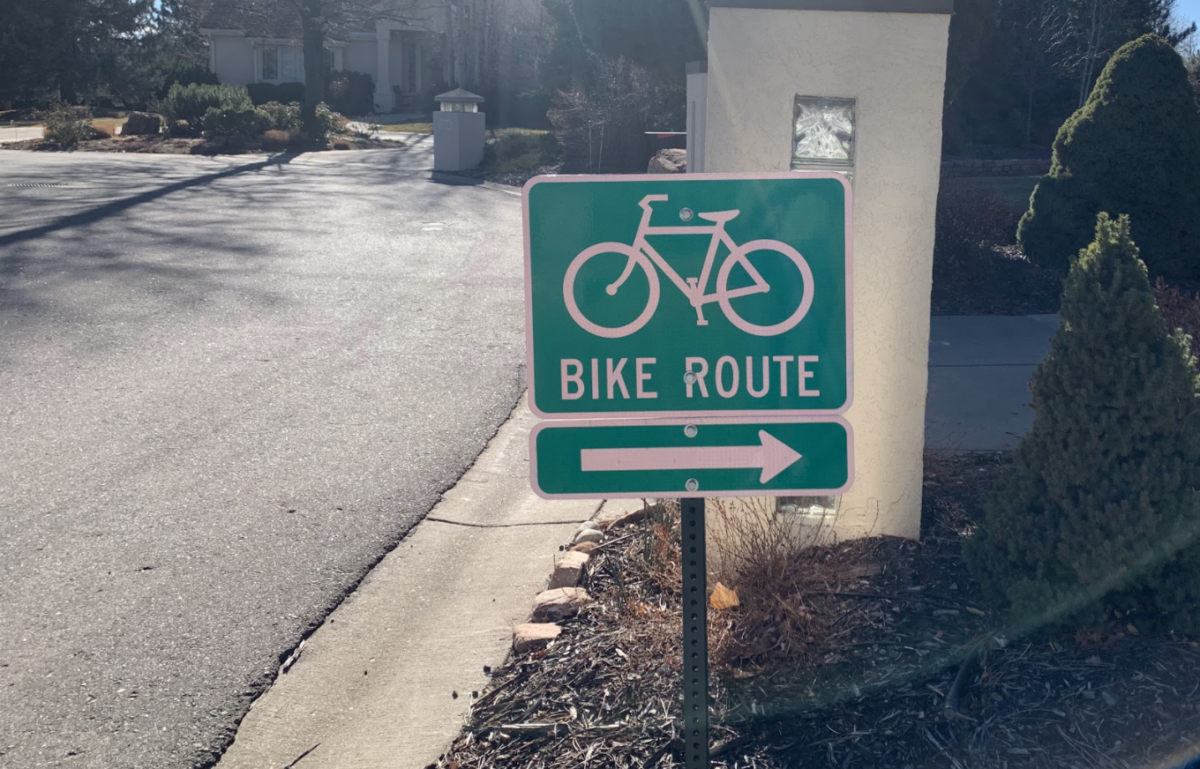
(Photos: Taylor Griggs/BikePortland)
Colorado’s transportation commission recently voted 10-1 to approve a new rule that requires their state Department of Transportation and local planning organizations in Colorado’s five major planning districts to make climate a key priority in any new transportation project, moving focus — and funds — away from highway and road expansions and to improving non-car transit options.
This kind of strict oversight and transparency is something that Oregon climate activists have called for.
As someone who was born and raised in the Denver area, this increased focus on climate-oriented infrastructure in Colorado is particularly interesting to me. I was lucky to grow up in a part of town that’s pretty walkable and bikable, but that wasn’t the case for a lot of people I knew, and I knew very few people who didn’t rely on a car. I’m in Colorado now to spend Christmas with my family, and learning about this new plan to change the very car-centric infrastructure here has made me view my home state with different — and more optimistic — eyes.
“The rule could shift some $6.7 billion by 2050 toward public transit, pedestrian and bicycle infrastructure, construction emission reduction, and other environmentally friendly strategies,” reported Colorado Public Radio.
These new requirements require the state DOT and regional transportation agencies to evaluate the climate impacts of planned projects before moving forward with them, and if they exceed a certain amount, they’ll have to offset emissions. Each project will undergo significant evaluation from a climate and equity-based perspective from the regional and state departments of transportation as well as the state’s transportation advisory committee, and these organizations will also need to provide many opportunities for public participation in the transportation planning process.
“The result of the statewide transportation planning process shall be a long-range, financially feasible, environmentally sound, multimodal transportation system plan for Colorado that will reduce traffic, air pollution, and smog while providing for efficient, resilient, and safe movement of people, goods and services,” reads a snippet from the Colorado Department of Transportation’s (CODOT) document outlining the plan.
These rules were established to meet Colorado’s relatively ambitious greenhouse gas pollution reduction goals that call for a 26% cut in greenhouse gas emissions by 2025 and a 50% cut by 2030 from 2005 levels.
Colorado’s new rules specifically address how the state and regional transportation departments and metropolitan planning organizations plan to ensure every transportation project follows these rules, with penalties if they don’t. The rules state that “in the event that a plan fails to comply, CDOT and MPOs have the option to implement GHG Mitigation Measures that provide travelers with cleaner and more equitable transportation options.” If the plans still don’t demonstrate compliance to the stated greenhouse mitigation measures, CODOT will restrict funding, “requiring that dollars be focused on projects and approved GHG Mitigation Measures that reduce GHG.”
This type of strict oversight and transparency is something that Oregon climate activists have called for from the Oregon Department of Transportation.
Advertisement
Coincidentally, Oregon passed a new Climate Protection Plan (CPP) on the same day the Colorado rules were adopted. Oregon’s CPP is an updated version of a plan that dozens of CPP Rulemaking Advisory Committee members considered inadequate (PDF).
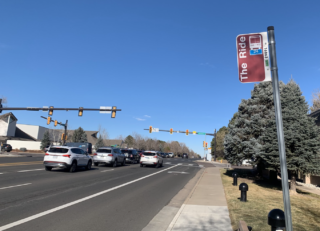
The CPP aims to reduce greenhouse gas emissions by 90% by 2050, the same as Colorado’s goal, but critics in Oregon are skeptical the state will follow through on enforcing the regulations that are necessary for this goal to come to fruition, especially when it comes to transportation projects. Like in Colorado, Oregon’s transportation sector accounts for the largest chunk of greenhouse gas emissions statewide.
As it stands, the state of Oregon is not on track to meet goals necessary to reduce the impact of the climate crisis, and activists are asking for more.
In October, Joe Cortright, a Portland-based economist who focuses on urban economies and has spent years crunching ODOT data, wrote that ODOT has released false environmental claims. In an article published on Strong Towns, Cortright claims that the department of transportation released an insufficient environmental impact report for the controversial I-5 Rose Quarter Freeway widening project and has falsified data about this project’s impact.
“They’ve created trumped-up projections that claim traffic and pollution will be greater if we don’t build freeways. These are false claims,” Cortright states in the blog post. “A key part of the agency’s argument is that this freeway-widening project…will have essentially no impact on air pollution or greenhouse gases. They make the fanciful claim in their Environmental Assessment that the not widening the freeway (the “no-build” option) will somehow produce more pollution than the eight- or 10-lane freeway their plans show they’re really intending to build.”
Cortright says ODOT is misleading the public about how “induced demand” impacts the efficacy of projects like the I-5 expansion. In this context, induced demand means that the more space on a highway will mean more traffic, despite it seeming like that would free up space. A Bloomberg CityLab article published in September also made an example of this freeway expansion, calling it “insanity” to think that expanding a highway will reduce traffic.
Although the Colorado rules leave open the possibility for more highway expansions, the rulemakers acknowledge that expanded highways create more demand in the absence of sufficient non-driving options and emphasize the importance of reducing vehicle miles travelled (VMT).
“The transportation modeling conducted for this rulemaking may demonstrate that certain projects increase GHG pollution for a variety of reasons,” the CODOT document says. “These reasons may include factors such as induced demand as a result of additional lane mileage attracting additional vehicular traffic, or additional traffic facilitated by access to new commercial or residential development in the absence of public transit options or bicycle/pedestrian access that provides consumers with other non-driving options.”
While some climate activists in Colorado wanted the rule to go further and entirely ban highway expansions, what was ultimately passed last week are still some of the most substantial transportation reforms in the country. A Curbed article drew national attention to the idea that Colorado is “showing us how to end American’s addiction to highway expansion,” saying that these rules could serve as a model for other states across the country.
Having lived in both Oregon and Colorado, I can attest to the similarities between the two states. Like other states in the American west, Oregon and Colorado have both suffered catastrophic wildfires, drought and heat events that are directly linked to the climate crisis. Both states have Democratic trifectas in their legislatures and have shown progressive leanings on issues like legalizing marijuana.
And both states are known for natural beauty and outdoor recreation opportunities for tourists and residents who are used to traveling by car to reach rural destinations.
Although the climate crisis will negatively impact outdoor recreation industries in these states, the new Colorado transportation rules met opposition from leaders in more rural parts of the state. Even so, the transportation committee approved the rules.
Transportation reform at the state and local level looks crucial now that the future of the federal Build Back Better bill that would expand infrastructure projects aimed at combatting the climate crisis has only a narrow path to passage. If these new Colorado rules mean substantial change toward more sustainable transportation options that curb emissions, this framework could encourage other states to follow suit.




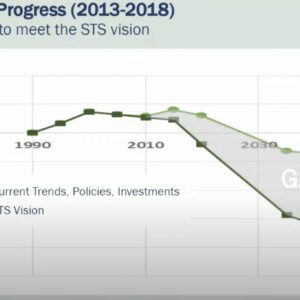
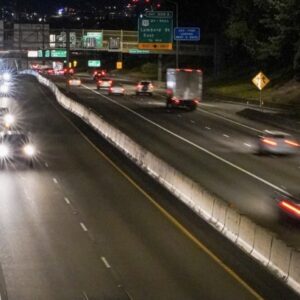
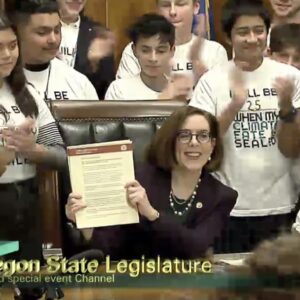
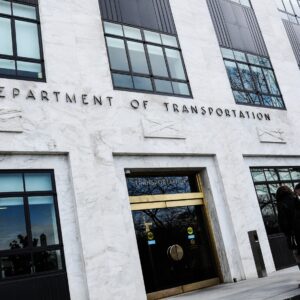
Thanks for reading.
BikePortland has served this community with independent community journalism since 2005. We rely on subscriptions from readers like you to survive. Your financial support is vital in keeping this valuable resource alive and well.
Please subscribe today to strengthen and expand our work.
Offsets and carbon trading/pricing are a form of climate science denial. I expect these rules will have little to no effect over the next 9 years.
If carbon trading and carbon taxing schemes are “climate science denial”, what narrowly prescribed solution admits the science of global warming is real?
I strongly favor a robust carbon tax, therefore you’ve branded me an unrepentant climate science denier. Burn the heretic!
The fact that the oil industry supports carbon trading tells you all you need to know about where carbon trading will take us.
Yup, carbon trading is just a scheme for someone to get rich.
If it works, what exactly is the problem with that?
Markets have been extremely successful in reducing sulfur dioxide and nitrogen oxide pollution in the United States and Europe. They’ve also been used successfully to reduce overfishing in local fisheries and water pollution in inland waters. If crafted properly with effective monitoring and aggressive emissions targets, they could work to limit emissions of greenhouse gases, as well. Would a tax or a mandate with real teeth work faster? Possibly. But you have to embrace any step in the right direction.
You are comparing minor byproduct pollutant that can be cheaply mitigated to the primary fuel/energy source for human economic activity.
And unfortunately, the idea that the NOx Budget Trading Program was a success is incorrect.
Atmospheric measurements of NOx (science) show that the NOx Budget Trading Program failed to decrease pollution once it was fully implemented in 2009:

https://www.pnas.org/content/115/20/5099
Carbon trading is based on the “pollution trading” schemes that have been very effective at addressing problems like acid rain. That emitters of the constituents of acid rain supported those programs tells you nothing about whether they worked or not. Spoiler: they did.
Whether “the oil industry” (everyone on the industry, certain firms, or who exactly, and why?) supports carbon trading tells you nothing about whether it could effectively lower carbon emissions or not. Your analysis is lazy and tribal.
Carbon offsets as they exist currently are pretty bad. They essentially encourage big companies to emit the same amount of carbon, but then buy an offset that probably doesn’t actually do what you think it does. If a company emits 400,000,000 tons of carbon, and then plants the equivalent of that carbon as trees… that sounds fine and all but what happens when there’s a forest fire? All that carbon offset is back in the atmosphere.
Carbon taxes could work, but need actually regulatory teeth to be enforced. which honestly is a fish I would like to see fried before any more climate laws get passed. the EPA (or equivalent regulatory agency) needs to actually be able and willing to enforce regulations before I get excited about new regulations 🙂
If polluters can just use forest preservation or planting as an offset, that isn’t a very effective pollution prevention system. A lot of carbon offset programs have been demonstrated to be completely counterproductive. But if you employ a cap and trade system that progressively ratchets down allowed emissions over time and requires polluters to buy and sell credits in a closed and defined market, it can work. You just have to effectively account for emissions and document fugitive emissions fully, which isn’t effectively being done at this point. Carbon offsets are a disaster, but regulated markets can and do work.
The “planting trees” offset is a particularly bad form of greenwashing, because the carbon those trees will consume is based on when they are mature…in 30 years. So these companies are getting license to pollute the atmosphere now, and betting on a forest three decades in the future to balance things out.
“narrowly prescribed”
there isn’t one and that’s why exceedingly slow and gradual carbon taxes (which have failed to decrease CO2e emissions in every case) are climate science denial.
You dismiss carbon taxes because they are “exceedingly slow” and “will have little to no effect over the next 9 years,” and conclude that those who support them are “denying the science” because they are ignoring the realistic timelines required for action.
So… what is the course of action you support, that will have the practical impact we need in the next 9 years? What is it that we can, in the real, not-totalitarian world we live in, do that will act faster than a carbon tax or other “denialist” solutions?
I dismiss them also because they are and have been ineffectual. And I also dismiss them because the IPCC climate modeling consensus shows that carbon prices would have to be astronomically high to significantly impact global heating (high prices/mandates without the social spending needed to soften economic upheaval are a recipe for political disaster)
https://iopscience.iop.org/article/10.1088/1748-9326/abdae9/pdf
A review of existing carbon pricing finds that they are not even rounding errors when it comes to decarbonization:
It should be noted that Europe’s carbon market has priced carbon at a higher level than the pathetic markets in Califonia and BC.
Only in FYIGM hyper-libertarian ‘murrica would mitigating a crisis that threatens civilization itself be considered “totalitarian”.
The IPCC SR1.5 chapter on mitigation pathways:
https://www.ipcc.ch/site/assets/uploads/sites/2/2019/05/SR15_Chapter2_Low_Res.pdf
That’s a particuarly telling study, Soren.
The study finds carbon taxes *at the levels they are levied* are marginally effective. It does note that Sweden’s – the “highest in the world” decreases pollution 0-17% PER YEAR. Which is huge.
One of the challenges it notes is leakage – which happens when some jurisdictions have taxes and others don’t. So if we all adopt polluter-pays principal, at the social cost of carbon, the policy can work.
Saying “it’s not working enough currently” is like criticizing a team with a great second baseman and bad record for losing and saying “see, that second baseman isn’t very good because her team loses.”
Funny how you did not address my main point:
The choice for people who actually want to limit global heating is mandates or defacto mandates (e.g. prices in excess of $1000/ton). The pricing being proposed by carbon market proponents is nothing more than a justification for delay and inaction.
You going to pay the carbon tax on burning the heretic?
It shouldn’t be rocket science: reduce VMTs.
However, Im scared ODOT responds to this kind of thinking with ‘this isn’t their wheelhouse’ as they are only responding to the demand that’s already there (which is bull).
ODOT needs to start getting serious in what Metro, Portland, and other land-use planning responsive governments have been slamming all along: less trips, more proximity, and competitive alternatives to driving-alone. Once again: reducing VMTs is not rocket science.
Tackling VMT seems much harder… We have lots of folks building rockets these days, but not many cities are successfully reducing VMT (except when forced by extrinsic events like covid, and even then… VMT is back up even as transit ridership has been halved.)
American cities aren’t doing anything to tackle vmt. London has been doing it, with some modest gains.
http://www.ucconnect.berkeley.edu/longer-term-impacts-london-congestion-charge
Transit is one effort (among many) to reduce VMT.
Unfortunately, in Portland, at least, the “transit experience” has degraded to the point that I regard it as a failed (or at least “currently failing”) effort. I rode Max a few days before Christmas, for example (on a trip where I could have easily justified the cheaper option of driving), and every railcar I was in featured at least one unmasked and obviously high person “interacting” with other passengers. The train was dirty, and the whole experience was unpleasant and felt marginally unsafe (both biologically and physically).
If our civic institutions can’t even manage keeping our light rail system clean and comfortable to use, what hope is there for the larger effort of providing good alternatives to driving?
I’ve always felt that the Max experience was rather poor in comparison to Portland’s buses. Dirtier for sure. In theory,I like rail better, but I prefer rail systems I’ve used in other cities that have fare restricted boarding areas. I haven’t taken transit much in the last two years, but when I have, it didn’t seem too different from pre covid times. Yeah, some people flout mask rules. But I was on a plane earlier this month and a bunch of people weren’t wearing their masks on the plane either.
London has used a combination of enhancing transit speed and frequency and imposing restrictions or fees on motor vehicle use. You aren’t going to get a significant change if you don’t use both tactics. Yes, improving transit is absolutely essential, but if parking remains cheap and plentiful and you don’t impose fees on the roads for SOVs, the best transit system in the world is only going to lure so many people out of their cars. Portland continues to bend over backwards to make driving and parking as cheap and easy as possible. Things aren’t going to change even if the Max cars are shiny, perfect and germ free.
It would definitely help to make transit feel like a high class option rather than the place you might get stabbed. That said, I agree with your fundamental point, but running transit more frequently and on more routes will only help our emissions profile if it attracts enough new passengers. Even before the pandemic, with ridership double today’s numbers, it was only a slight-to-moderate energy improvement over driving on a system-wide basis. Today, it’s probably a net loser.
Tolling I5, which I cautiously support, probably won’t work as hoped — it will be too easy to evade by using surface streets, which is exactly what we cyclists and air breathers don’t want. If the tolling happens at the Columbia (which is probably illegal under federal law), evasion will be difficult, but alternatives are poor. Most people will probably just take the hit. Driving from Vancouver to Portland is already painful enough that people aren’t doing it for fun.
We probably need a much higher gas tax (the poor cousin of a carbon tax), though I imagine the Democrats want to be reelected sometime this century, so it seems unlikely we’ll get one.
Which means… Back to the rocket lab.
And in Portland “Pricing Options for Equitable Mobility” took congestion/climate charges off the table in favor of more parking fees (which will do next to nothing to decrease driving and make the city even more dependent on cage users for revenue).
This is not a bureaucratic crisis where tiny reforms can save us, it is a civilization-threatening crisis that requires urgent sociopolitical transformation.
It is in the wheelhouse of “climate champions” who voted for business-as-usual Governor Brown and her captured democratic colleagues. It is also in the wheelhouse of climate ostriches who have their heads firmly stuffed into holes of delay (carbon-neutral, net-zero, climate taxes/fees, offsets, “distant future transitions”, blah, blah, blah, blah, blah…)
“$6.7 billion by 2050” doesn’t pencil out to very much at all per year, unless they mean $6.7 billion EACH YEAR until 2050, which is unlikely to be realized given the looming climate catastrophe, ongoing disease pandemics, and the nation’s current asset bubble that is about to burst.
Colorado’s annual general fund is $12 billion. I doubt they committed HALF of their state budget to this. However, something like $200 million annually sounds about right. Probably a small fraction of their total transportation expenses.
I agree. Whatever the case, given the state’s continued population growth and factoring in inflation over the next 28 years, that $6.7 billion won’t seem very much by then – I’m not even sure if it’s worth all that much right now.
It’s buy a couple miles of light rail. That’s about it!
More climate science proclamations/plan/committment/rule vaporware. There are no firm committments, no actual revenue –just performative BS.
These kick-the-can-down-the-road rules/plans/proclamations are just another way to avoid spending the revenue needed to increase our carbon budget now. (And if we don’t start dramatically increasing our carbon budget before 2030, 2 C is coming.)
I wonder if Colorado will finally legalize skateboarding. Despite thousands of Coloradans using skateboards as active transportation every day, it’s pretty much illegal state-wide.
Also, Denver bans bikes on the 16th street mall during the week. Yet allows people to camp on the sidewalks and use drugs openly. It’s weird. Also bikes are banned from
Sidewalks in the downtown Denver area regardless of road safety for bikes. And yes, it’s enforced. It’s a Denver myopic thing.
Bikes are also banned on sidewalks in downtown Portland (defined as the portion of SW bordered by I-405 and, I think, the Marquam). That’s pretty common in urban areas. Diverting bikes from an outdoor mall like 16th Street where there are usually lots of pedestrians doesn’t seem like necessarily a terrible thing…IF there are safe nearby biking routes.
Ultimately I think having separate, protected spaces for walkers, rollers and drivers reduces the likelihood of injuries (or vehicular-caused deaths). But in plenty of places it’s not just bicyclists who need more room, pedestrians do too.
Cities just don’t want to get serious and start taking lanes from vehicles to make walking and rolling safer, so they pit bicyclists and pedestrians against one another in using the same cramped spaces.
Denver probably doesn’t actually “allow” camping or open drug use; conversely, you could probably get away with riding your bike on the pedestrian mall. But enforcing the former is probably impossible (homeless drug addicted people often have little to lose, and might actually be better off incarcerated); enforcing the latter is not worth the city’s time, and besides, many riders are law-abiding citizens who will comply even if they don’t like the regulation.
As is the case in many disagreements, your comparison of the legality of biking vs open drug use and camping relies on a generous reading of specific words; in this case, “allows.”
In other words, you’re suggesting that open drug use and camping are fully legally sanctioned, while bike riding in a certain pedestrian mall is illegal, but without acknowledging that uncontrolled camping and drug use are quite normal in many expensive cities these days, regardless of where bike riding is legal, and regardless of the legality of camping or open drug use. So the issues are unrelated, and the “allows” come not as a result of the city’s considered weighting of the relative risks and benefits of riding a bike vs camping and drug use, but rather a complete breakdown of normal incentive structures.
You also ignore the reality that you’d probably be fine riding your bike through the mall in question; you’re probably a law-abiding citizen like most of us, and *that* (not the possibility of being tackled by a police officer) is what is keeping you from riding through there. Conversely, homeless people with drug addictions presumably feel less compunction, and they’ll camp and use drugs anywhere they can get away with it. Because cities cannot afford to house them or treat their conditions, there’s no easy constructive remedy. Even a punishment remedy is unworkable, because, being most likely indigent, these people have little to lose. You, on the other hand, might be subject to a fine if caught riding on a pedestrian mall. Because you are not homeless and addicted, the threat of punishment probably actually means something to you!
So, Denver almost certainly does not “allow” open drug use and probably only “allows” camping because of (depending on which US Circuit they’re in) either court order or the impossibility of housing and treating thousands of people who have little to lose.
I get it, though. I truly do. It *is* weird. But it’s also quite logical, given the situation, and it’s not such a strong indictment of the city of Denver. It’s kind of like that quote from J Paul Getty, “If you owe the bank $100 that’s your problem. If you owe the bank $100 million, that’s the bank’s problem.”
Great reporting. I like the Joe Cortright and StrongTowns story on I5 widening report, and the CO example of targeting transportation infrastructure budgets. Bringing examples from other states and cities is very useful. I do want to bring up that CO has >$17B oil/gas sector and this lobby has prevented CO from putting a cost on GHG transportation fuels, which is being done in CA, OR, and WA. See Low Carbon Fuel Standard (CA), or Clean Fuel Program (OR). So while CO example is nice, it is the only step the state government can take, because CO is unwilling to put a real price/cost on carbon transportation.
https://www.canarymedia.com/articles/climate-crisis/colorados-climate-change-compromise-bill-sets-emissions-mandates-for-electricity-industry-and-oil-and-gas
CO oil/gas sector
https://www.api.org/news-policy-and-issues/news/2021/07/20/colorado-pwc
Can anyone on this string outline some impactful practical steps that can be taken to forward this sort of transportation reform in Oregon? What needs to happen, to push this forward, Jonathan?
“And both states are known for natural beauty and outdoor recreation opportunities for tourists and residents who are used to traveling by car to reach rural destinations.”
Does anyone know of any states that aren’t? The statement above pretty much defines every state in the USA.
What are the other 48 states considering for their climate responses?
I can think of several midwestern and northeastern states which have little “natural beauty” remaining, and their tourist marketing is often focused on urban and rural sight-seeing and experiences.
I don’t know of many other states where a very large portion of visitors fly into the airport then drive between 80 and 200 miles to get to their destination in the mountains.
The Denver metro has a bike/walking path system like few others. Many of them parallel highways. Oregon likes to expand highways but Hasn’t figured out how to really put in just a tiny bit more concrete for a or pathway. What they are good at is building a road then coming back later and rebuilding the road for millions more to include bikes.
Is Colorado perfect? No. But culturally multi use paths are far more engrained than Oregon.